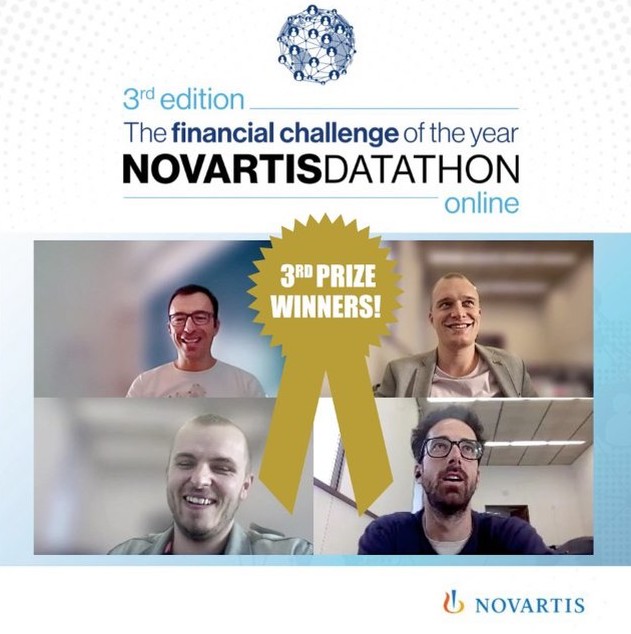
The Novartis Datathon is a Data Science competition taking place annually, usually in Barcelona. In 2020, the Barcelona GSE team “Non-Juvenile Asymptotics” consisting of Eduard Gimenez, Patrick Altmeyer, Simon Neumeyer and Jakob Poerschmann won third place after a fierce competition against 57 teams from 14 countries all over the globe. While the competition is usually hosted in Barcelona, the Covid-friendly version was fully remote. Nevertheless, the increased diversity of teams clearly made up for the missed out atmosphere.
This year’s challenge: predict the impact of generic drug market entry
The challenge of interest concerned predicting the impact of generic drug market entry. The risk of losing ground against cheaper drug replicates once the patent protection runs out is evident for pharmaceutical companies. The solutions developed helped solving exactly this problem, making drug development much easier to plan and calculate.
While the problem could have been tackled in various different ways, the Barcelona GSE team focused on initially developing a solid modeling framework. This represented a risky extra effort in the beginning. In fact more than half of the competition period passed without any forecast submission by the Barcelona GSE team. However, the initial effort clearly paid off: as soon as the obstacle was overcome, the “Non-Juvenile Asymptotics” were able to benchmark multiple models at rocket speed.
Fierce competition until the very last minute
The competition was a head-to-head race until the last minute. Still in first place until minutes before the final deadline, the predictions of two teams from Hungary and Spain ended up taking the lead by razor sharp margins.
Congratulations to the winners!!!

